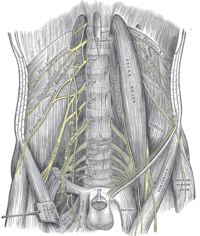
Photo from wikipedia
Neurochemical corelease has received much attention in understanding brain activity and cognition. Despite many attempts, the multiplexed monitoring of coreleased neurochemicals with spatiotemporal precision and minimal crosstalk using existing methods… Click to show full abstract
Neurochemical corelease has received much attention in understanding brain activity and cognition. Despite many attempts, the multiplexed monitoring of coreleased neurochemicals with spatiotemporal precision and minimal crosstalk using existing methods remains challenging. Here, we report a soft neural probe for multiplexed neurochemical monitoring via the electrografting-assisted site-selective functionalization of aptamers on graphene field-effect transistors (G-FETs). The neural probes possess excellent flexibility, ultralight mass (28 mg), and a nearly cellular-scale dimension of 50 μm × 50 μm for each G-FET. As a demonstration, we show that G-FETs with electrochemically grafted molecular linkers (-COOH or -NH2) and specific aptamers can be used to monitor serotonin and dopamine with high sensitivity (limit of detection: 10 pM) and selectivity (dopamine sensor >22-fold over norepinephrine; serotonin sensor >17-fold over dopamine). In addition, we demonstrate the feasibility of the simultaneous monitoring of dopamine and serotonin in a single neural probe with minimal crosstalk and interferences in phosphate-buffered saline, artificial cerebrospinal fluid, and harvested mouse brain tissues. The stability studies show that multiplexed neural probes maintain the capability for simultaneously monitoring dopamine and serotonin with minimal crosstalk after incubating in rat cerebrospinal fluid for 96 h, although a reduced sensor response at high concentrations is observed. Ex vivo studies in harvested mice brains suggest potential applications in monitoring the evoked release of dopamine and serotonin. The developed multiplexed detection methodology can also be adapted for monitoring other neurochemicals, such as metabolites and neuropeptides, by simply replacing the aptamers functionalized on the G-FETs.
Journal Title: Analytical chemistry
Year Published: 2022
Link to full text (if available)
Share on Social Media: Sign Up to like & get
recommendations!